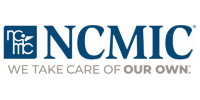Over the last few years many of you have heard the cries of our fellow chiropractic practitioners in California over the revisions in their Workers Compensation system. In 2004 the California legislature adopted the American College of Occupational and Environmental Medicine (ACOEM) guidelines for use in that system. Only those interventions recommended in the ACOEM guidelines are now reimbursable under California law. The only exception available under this law is that the ACOEM guidelines may be supplemented by other nationally published guidelines. In December of 2007 Gary Globe, DC, MBA, PhD, who is serving as the California Chiropractic Association (CCA) representative on the California Workers Compensation Advisory Board, contacted the CCGPP for assistance. Dr. Globe indicated that there was a brief window of opportunity for the chiropractic profession to provide a nationally published supplemental guideline to clarify weaknesses in the ACOEM guidelines as it pertains to chiropractic care for low back and chronic pain conditions. However, for this opportunity to be realized, that supplement had to be available for the next regularly scheduled meeting of the California Workers Compensation Advisory Board on March 19, 2008. As many of you are aware, in September, 2007 the CCGPP's Rapid Response Team initially penned a letter to United Healthcare demonstrating the inappropriateness of their newly adopted policy of non-coverage for chiropractic care of pediatrics and headaches. That letter was subsequently endorsed by the ACA, ICA, FCER, COCSA, ACC, etc. In response to that letter, in October, 2007 United Healthcare suspended both policies for additional review. They have recently announced they have retracted the pediatric policy altogether and have reworked the headache policy. Due to the rapidity and success of this response, Dr. Globe was prompted to contact the CCGPP for assistance with the California Workers Compensation situation. The CCGPP at its inception was charged with the evaluation of any guidelines, parameters, protocols, best practices, and standards of practice. This also means taking a stand for the profession when a problem or potential assault is noted. Therefore, the CCGPP accepted the California challenge and has undertaken a new initiative. We are currently involved in a Delphi process to generate consensus opinion of Doctors of Chiropractic from across the country regarding the care of low back pain, especially chronic pain. After conducting its extensive literature synthesis on low back conditions initially posted on the Internet in May of 2006, the CCGPP is acutely aware that there is inadequate literature on various areas of common chiropractic practice. Many of those studies that do exist have a medical bias that needs to be tempered with a chiropractic lens, as provided by the CCGPP's team of low back experts. The purpose of the Delphi technique is to elicit information and judgments from participants to facilitate problem-solving, planning, and decision-making. It does so without physically assembling the contributors. Instead, information is exchanged via mail, FAX, or email. It is structured to capitalize on the merits of group problem-solving and minimize the liabilities of group problem-solving. Consensus derived from a rigorous Delphi process is considered to be expert evidence, and while not as highly valued as some forms of research, it is nevertheless widely used and accepted, particularly in addressing areas where high quality research is lacking. Indeed, other national guidelines have used medical expert opinion to address issues of chiropractic care when more definitive literature was not available. The purpose of the CCGPP conducting the present Delphi process was to look at the same literature base others have, through a chiropractic expert perspective. The Delphi technique requires a Coordinator to organize requests for information, information received, and to be responsible for communication with the participants. The Delphi technique requires an efficient communication channel to link the Coordinator with each of the participants. Therefore, this Delphi process is being undertaken in an effort to clarify the role of chiropractic in these areas of care, especially as they are impacted by the Workers Compensation system and their incorporation of external guidelines, e.g. ACOEM, ODG, etc. CCGPP solicited seed panelists from chiropractic's national organizations, e.g. ACA, ICA, etc., and from the state associations through COCSA. These 39 panelists are all actively involved in chiropractic practice from across the country with a diverse variety of philosophy, technique and practice situations. As background material, those panelists were provided the CCGPP's Low Back literature synthesis, along with Dr. Gert Bronfort's recent study published in the Spine Journal. After reviewing the ACOEM guidelines, the CCGPP's Seed Committee then developed 27 seed statements defining areas of concern within those guidelines. Those seed statements were then submitted to the panel for review and comment. After the first round of review, there was greater than 80% consensus on 24 of the 27 seed statements. On the 3 outstanding seed statements, the panelist's comments were reviewed by the Seed Committee and utilized to revise those statements. Those revised seed statements were then submitted to the panelists for a second round of review and comment. After the second round, the 3 remaining outstanding seed statements again achieved greater than the 80% threshold for consensus that the Seed Committee had required at the outset of the project. The Seed Committee is currently in the process of incorporating the acquired commentary into a final consensus report. The CCGPP is hopeful of having the final version available by the beginning of June for use in the California Workers Compensation process. That consensus report will also be posted on the CCGPP's website when it is available. The CCGPP Scientific Commission Chair, Dr. Cheryl Hawk, also has a verbal commitment from the Journal of Manipulative and Physiological Therapeutics to publish the available literature syntheses chapters, inclusive of this consensus report, in the November/December 2008 issue. CCGPP has studiously avoided entering into the "guidelines" development process for a number of years, especially following the furor raised over the "Mercy" guidelines. They were widely condemned, particularly by those who never took the time to read them or learn how to properly apply them to obtain the care their patients needed. However, "Mercy" was a long time ago, given the pace of change in health care over the last decade and a half, and the literature needed to be updated. Third party payors, government agencies, other guideline organizations, patients, and yes, even DC's now want to know what kind of care is supported by evidence. Our profession's refusal to address this issue has led to the inevitable result that MD's, insurers and bureaucrats are now deciding what reasonable chiropractic care should be, based on their interpretation of the currently available scientific literature. We must remember that we exist as a profession to provide a service our patients need and want and not to advocate for what is best for our own benefit. Need proof? Our market share has not increased (and some would argue it has declined) despite the greatest increase in the use of CAM in recent history. We continue to have little cultural authority, meaning in part that the public still does not clearly understand our role and areas of expertise in the health care market. Physical therapists are publishing widely accepted papers on indications for manipulation of the low back, and have made it clear that they intend to take over chiropractic's traditional place in the health care market. The good news is that there is a great deal of evidence for what we do, as revealed by the CCGPP Low Back Literature Synthesis, as well as the subsequent CCGPP condition related chapters. The crisis in California (where nearly one-quarter of US doctors of chiropractic practice) has provided an opportunity to address what many of us consider to be mis-interpretation of the scientific literature, and to instead re-interpret the scientific literature viewed through a chiropractic lens. This Delphi process was in part developed by the CCGPP in response to what we heard at COCSA in Baltimore in 2006, where one of the primary concerns voiced by our critics during our round table discussion was that not every aspect of chiropractic practice had yet been subjected to randomized controlled trials. Now some of those same critics have already begun to naively criticize this effort as "unscientific." Nothing could be further from the truth. CCGPP conducted a multi-year, scientific evaluation of the current literature based on internationally accepted standards and resulting in the aforementioned Low Back Literature Synthesis. We also included additional, newly released research, published in interim since the completion of the Low Back Literature Synthesis. This formed the framework for the subsequent Delphi consensus process, which is widely viewed as an appropriate, defensible and scientific methodology for addressing areas where scientific literature is lacking. The issue of "dosage" is a perfect example of the need for a scientific consensus process. Patients, insurers, DC's and others want to know what reasonable parameters of chiropractic care are for a given condition. Is it short trials of treatment to see if it helps, or 75 visits and year-long contracts? Most published literature on this subject is based on treatment restrictions which do not realistically reflect actual practice, but reflect necessary limitations imposed by clinical study protocols. Accordingly, the most appropriate and valid methodology for addressing the gaps between scientific studies and clinical practice is a rigorous consensus process. We chose to use the Delphi process because of its economy in terms of both costs and timeliness. We chose to ask every state association and national organization in the country to provide participants who were conversant with using published literature, represented a wide variety of practice styles, philosophies and locals, and who were willing to work collegially to try to reach accord. Is the end result what we wanted? No, if the goal was the ability of the individual chiropractor to practice unfettered by any constraints (and we are unaware of any other health care profession with such a privilege). But if the goal was to draft a guideline which reflects the mainstream of chiropractic practice, provides advice and benchmarks for extending trials of treatment, and most importantly safeguards our patients' rights to demonstrably effective, conservative chiropractic care, then we believe this is a good start. We anticipate that this type of consensus process will eventually have national impact, as New York, Ohio and other states are also incorporating the ACOEM or other guidelines into their Workers Compensation systems. As an example, the CCGPP was contacted in early March by the ACA to participate in their recently established Guideline Review Task Force. This task force has been established in response to a request by the ACA Delegate in Tennessee, Dr Michael Massey. BCBS of Tennessee has requested a critique of the Milliman Care Guideline, 12th Edition, as it applies to chiropractic care. Once that review has been completed, the task force members are hoping to again put together an intraprofessional coalition to sign onto the review, such as was done with the successful effort to convince United Healthcare to change its Pediatric and Headache Guideline. It is the hope of the involved parties that this review will be used to enter into a collaborative effort with Milliman and Robertson to improve their product, beyond its application to BCBS of Tennessee. For further information or if you are interested in assisting with this process, please visit the CCGPP website at www.ccgpp.org Ultimately, the CCGPP views this type of consensus development as one of the next phases of the progression from the literature syntheses to the "best practices" development process we have dubbed the "Chiropractic Clinical Compass". This is also another example of the CCGPP's Rapid Response Team model, where the fluidity of our organization is able to mobilize our teams of experts and effectively address an immediate issue. However, we were only able to conduct this process due to the generous donation of time by all participants, or the generosity of the institutions at which they are employed. ABOUT THE AUTHOR: Dr. Mark D. Dehen is a second generation Doctor of Chiropractic practicing in North Mankato, MN. He does ergonomic consulting and injury prevention for local industries. Dr. Dehen is a past president of the MN Chiropractic Association and recipient of the MN Chiropractor of the Year award. Currently, he serves as Chair of the CCGPP.
Source




